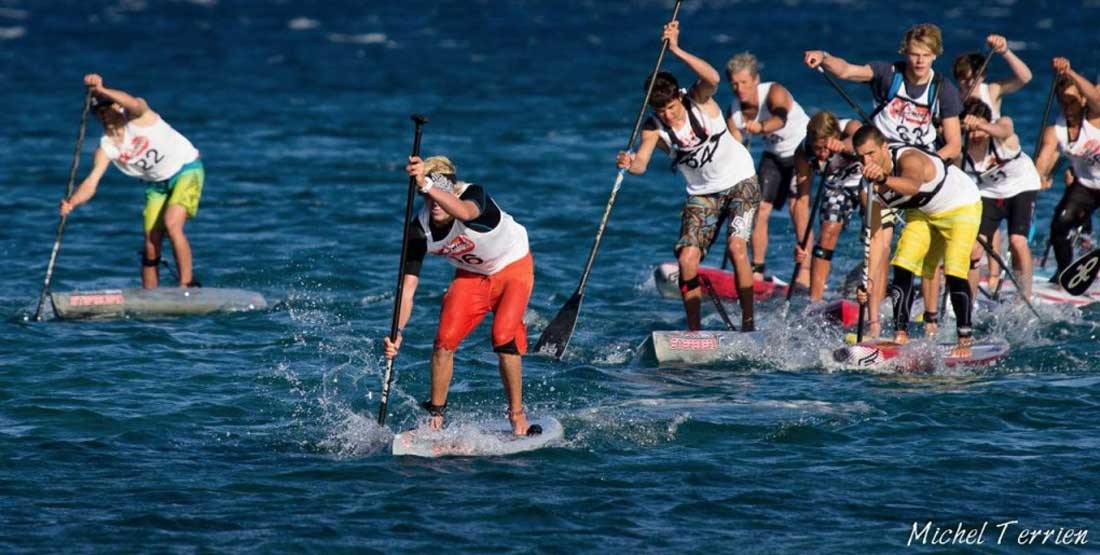The choke stroke when paddleboarding and SUP racing is highly beneficial for short sprints to buoys, paddling into strong head wind, executing starts, and approaching the finish line. Best approach to this paddle stroke involves sliding hands down the paddle, slightly leaning forward, and then giving it all with powerful paddling. It's a straightforward technique that significantly enhances speed and performance. By gripping the SUP paddle shaft underneath the handle, rather than on top, you effectively reduce the paddle's length by 2-3 inches.
How frequently is the choke stroke used?
The choke stroke is used fairly often during a paddle, but not for extended periods. It is employed during short bursts when the benefits of getting closer to the water are desired.
In what paddling scenarios is the choke stroke most effective?
The choke stroke is most commonly utilised when paddling against the wind. By employing a "shorter" paddle, it enables quicker and more dynamic strokes, counteracting the decreased glide experienced when paddling into wind and chop.
Swiftly removing and reentering the paddle into the water reduces the wind's ability to impede progress. Additionally, gripping the paddle lower forces the paddler's body closer to the water, minimising the surface area for the wind to act upon.
Step-by-Step Guide to Performing the Choke Stroke
1. Grasp the paddle just below the handle at the neck of the shaft. Rotate your hand 90 degrees and wrap your fingers around the top of the paddle shaft. Both hands should grip the paddle shaft with thumbs up and pinkies down.
2. Assume a lower stance with your body. Remember that by effectively shortening the paddle, you need to lower your body height by a corresponding amount. Either bend your ankles and knees more deeply or adopt a staggered stance with your paddling side foot slightly behind the other foot. Typically, maintain bent knees and a low body position throughout the technique, rather than achieving a full body extension with each stroke.
3. To maximise the effectiveness of the choke stroke, take shorter, faster strokes, emphasising swift removal and reentry of the paddle into the water.
4. Always maintain an upright chest, shoulders back, and remember to breathe.
Choke Stroke Pro Tips
When executed correctly, the choke stroke is notably faster in upwind conditions. It is frequently used during sprints and starts, although personal preference may vary. The shortened paddle length allows for a quicker stroke cadence, contributing to its perceived benefits.
It's important to note that the choke stroke can be more physically demanding on the legs and back compared to a typical forward stroke. Consequently, it is advisable not to employ it for prolonged periods.
Like any new technique, mastering the choke stroke requires practice and time. Initially, it may feel awkward and less efficient. One might become proficient on one side but struggle on the other. However, with continued practice, comfort and proficiency can be achieved on both sides.
Common Mistakes to Avoid:
When attempting to lower the body closer to the water, it is essential to avoid excessive forward bending at the waist. Instead, distribute the additional load to your legs by bending at the knees and ankles, not the back.
Keep in mind that to make the choke stroke effective, you need to significantly increase your stroke rate.
See how one of the leading paddleboard racers, Seychelle explains the SUP Choke Stroke:


